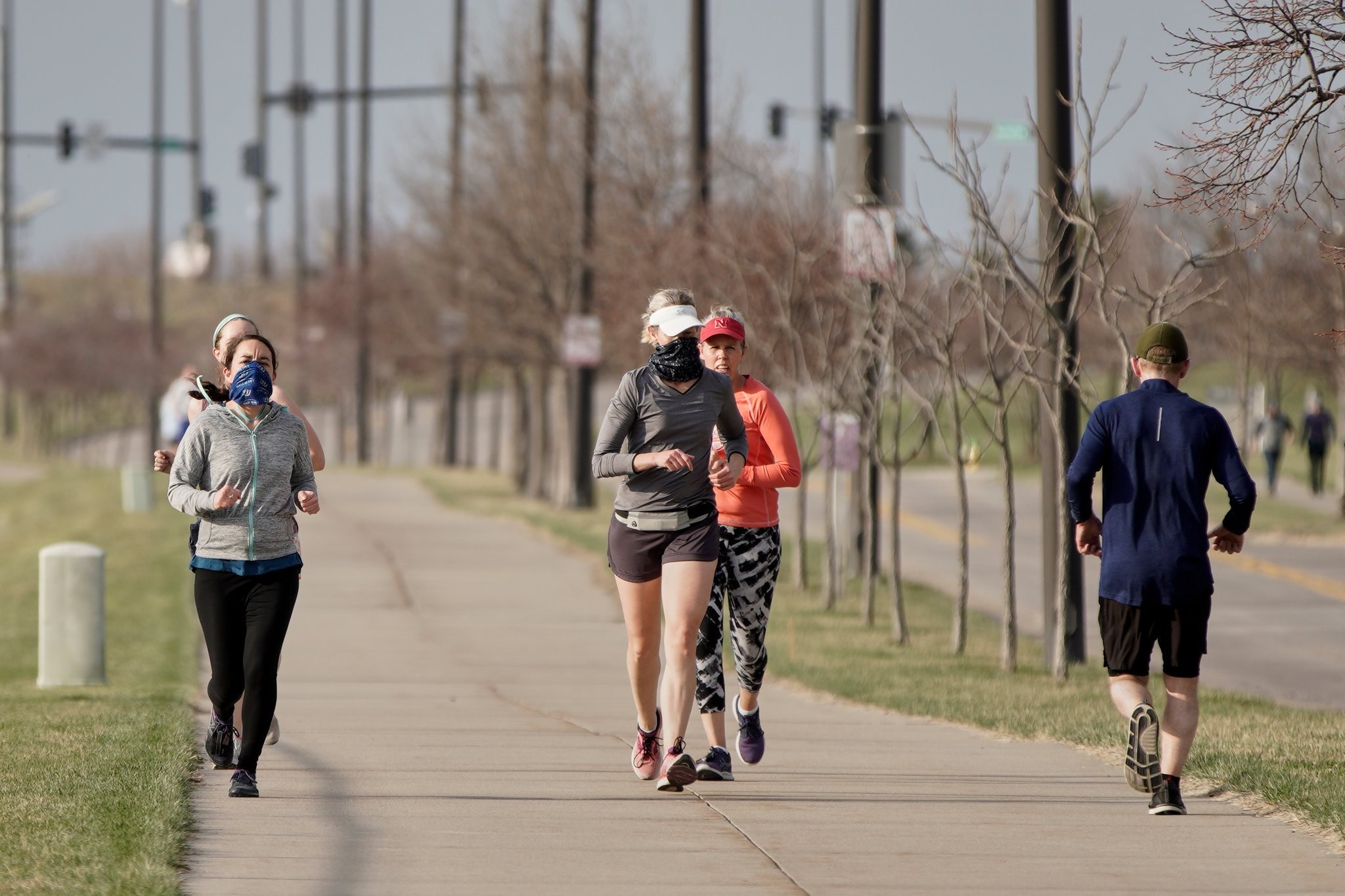A new study shows that working out while wearing a mask won’t sabotage your fitness goals
Though gyms and fitness studios are currently closed in England due to the second lockdown, that doesn’t mean the spread of coronavirus is under control. To help mitigate the spread, many gyms and indoor training facilities require clients to wear masks or face coverings. The good news: Early research suggests they don’t actually hinder your performance in terms of time to exhaustion or peak power output, and had no discernible negative effect on blood or muscle oxygenation levels, rate of perceived exertion, or heart rate in young, healthy adults.
Researchers at the University of Saskatchewan gathered a small sample of 7 men and 7 women, ranging from slightly inactive (not meeting the Physical Activity Guidelines of 150 minutes of moderate to vigorous activity per week in Canada) to elite cyclists and tested the effects of wearing a three-layer cloth face mask, a surgical mask, and no mask on their exercise performance. (The Association of American Medical Colleges suggests that cloth masks should have at least two layers whenever possible to be most effective.)
The study participants started with a brief warm-up on a stationary bike, then underwent a progressive-intensity exercise test, during which they had to maintain the same pedal rate while the resistance was continually increased until exhaustion, Phil Chilibeck, PhD, professor at the University of Saskatchewan College of Kinesiology and co-author of the study explained to Runner’s World. Heart rate, blood oxygen saturation, and rate of perceived exertion were recorded every 30 seconds.
Each of the three tests were done on a different day to allow full recovery between tests, Chilibeck added. Additionally, participants were required to maintain similar diet, sleep, and exercise routines for 24 hours before each test.
The results, published in the International Journal of Environmental Research and Public Health found that wearing a mask had no effect on performance or muscle oxygen levels. Since there was no difference in time to exhaustion between conditions, the peak power reached at the end of each test was similar in mask and no-mask conditions for all participants, Chilibeck explained. Researchers also did not see any effects of the masks during exercise on arterial (blood) oxygen levels, which would decrease if breathing was affected.
And while droplet spread was not measured, all masks used were tested in a previous study in which they were shown to effectively minimise droplet spread, according to Chilibeck.
Though the participants represented a wide range of fitness levels, it’s important to note that these tests were conducted on a very small sample size (just 14 young, healthy adults), and more research is needed on larger populations to draw sweeping conclusions about the general population.
posted Thursday November 12th
by Runner´s World
